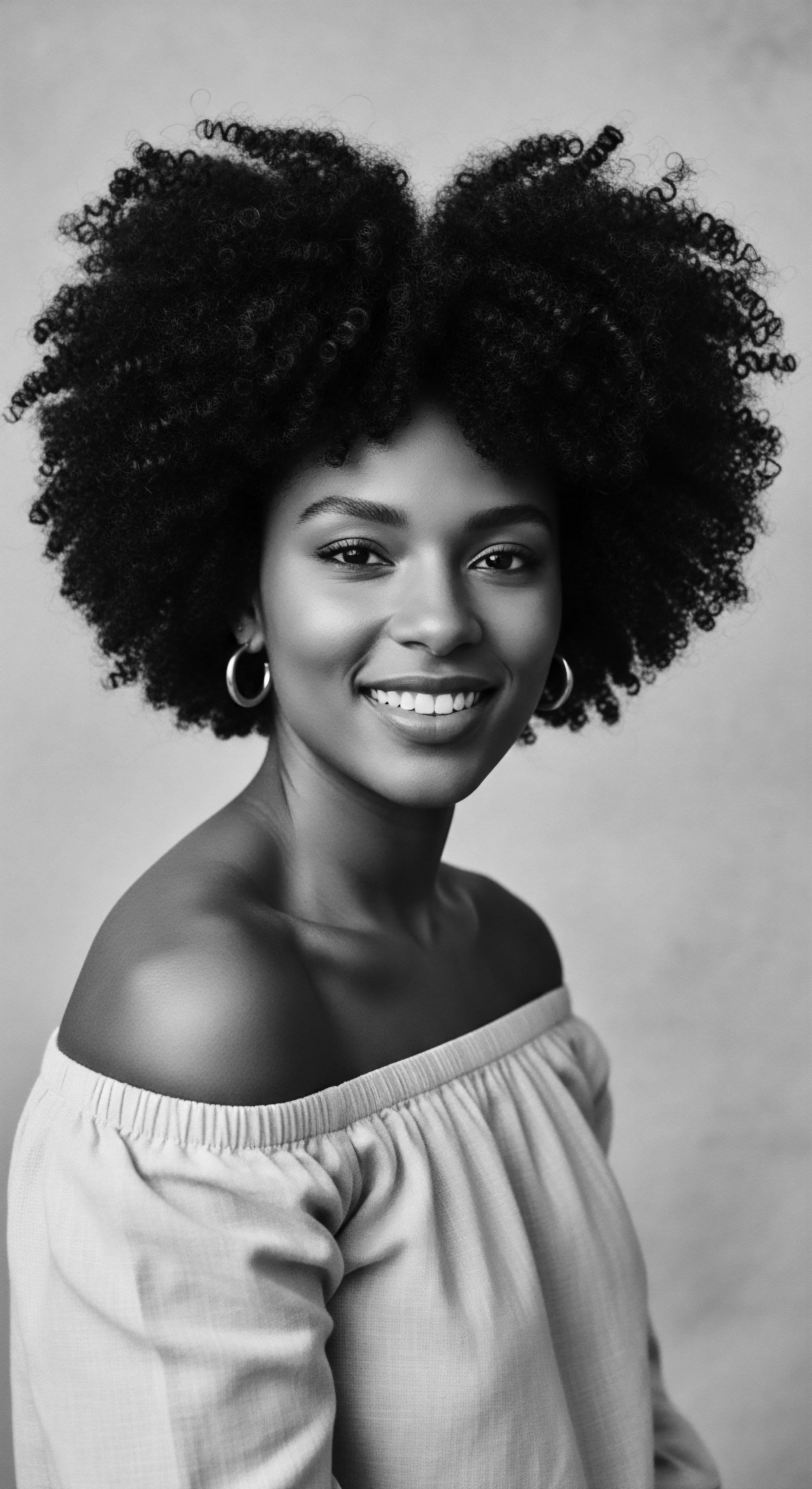
Fundamentals
The essence of Scalp Microbiome Health resides in the harmonious balance of countless microscopic organisms that call our scalp home. This intricate living community, comprised of bacteria, fungi, and other minute entities, operates in concert with our skin cells, playing a significant role in the overall vitality of our hair. Consider it a vibrant, unseen garden upon the head, where each species contributes to the flourishing or languishing of the strands it supports. A balanced microbial ecosystem acts as a natural guardian, offering protection against unwelcome pathogens and helping to maintain the scalp’s natural pH and moisture levels.
For those beginning to unravel the wisdom held within their hair, understanding the scalp microbiome offers a fresh perspective. This foundational comprehension reveals how the scalp, often overlooked, stands as the very ground from which our hair springs forth, much like a fertile soil yielding robust crops. Its condition directly influences the strength, appearance, and growth patterns of each individual strand. When this delicate equilibrium is disturbed, a myriad of common scalp concerns, from dryness and itchiness to irritation and flaking, may arise, signaling a disruption in this unseen world.
The journey to appreciating Scalp Microbiome Health begins with acknowledging its presence and its profound impact. This initial recognition paves the way for a more intentional approach to hair care, one that moves beyond superficial concerns to address the elemental biology at the root. The understanding here is that fostering a thriving microbial community on the scalp is not merely a scientific concept; it is a pathway to enduring hair well-being, deeply connected to the heritage of care that has long recognized the scalp’s pivotal role.
Our ancestral traditions, though lacking modern scientific terminology, possessed an intuitive grasp of this ecological interplay. Ancient practices, passed down through generations, often incorporated ingredients and methods that, in hindsight, contributed to a balanced scalp environment. This deep, inherited wisdom forms a continuous thread, connecting past care rituals to contemporary scientific revelations about the scalp’s microscopic inhabitants. The delineation of Scalp Microbiome Health, therefore, is an elucidation of this ancient wisdom through a modern lens, providing clarification on the scientific underpinnings of long-held beliefs.
Scalp Microbiome Health represents the vital equilibrium of microorganisms on the scalp, acting as a silent guardian for hair vitality and reflecting ancestral wisdom in modern understanding.
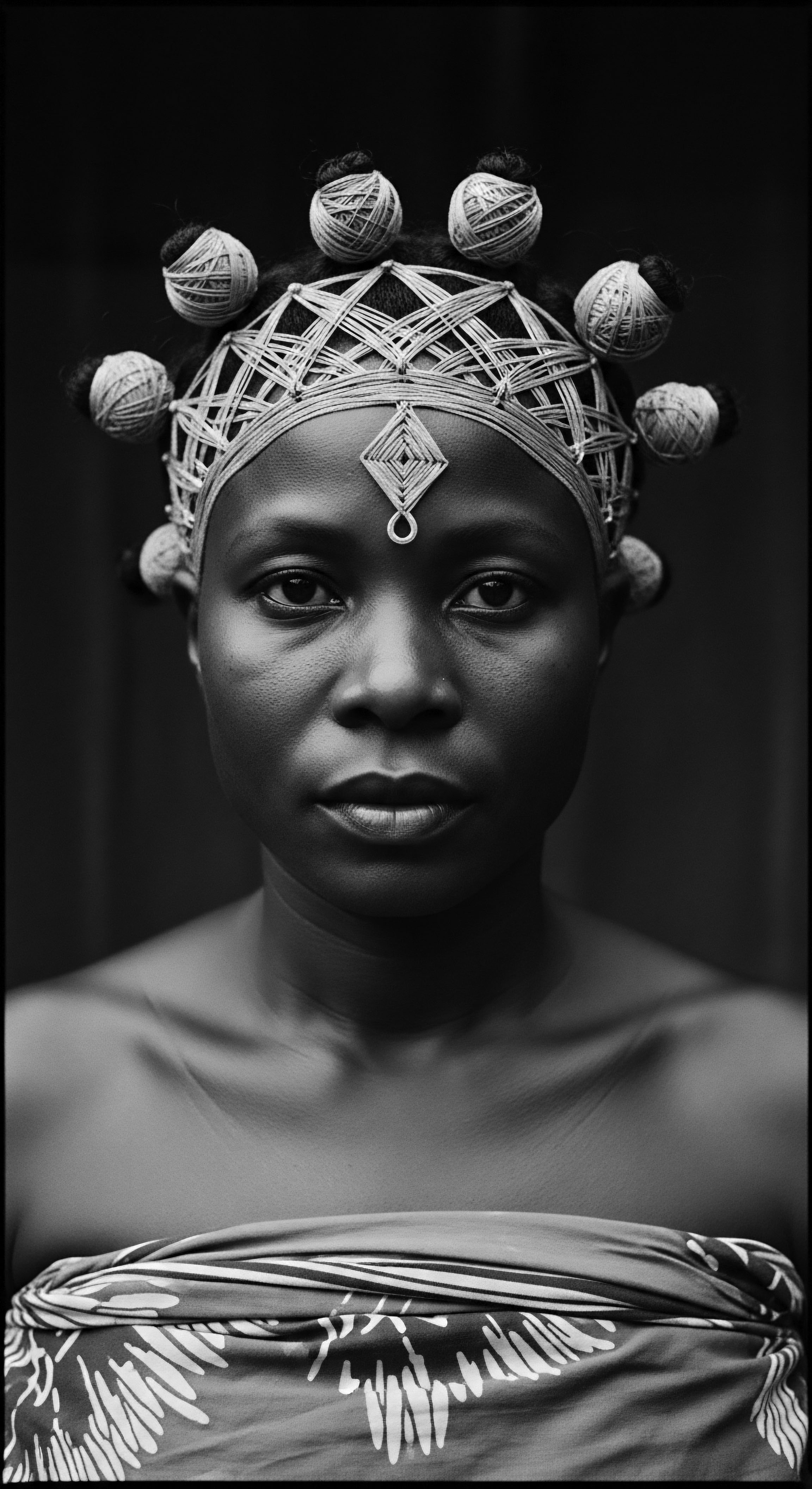
The Living Surface ❉ A Historical View
Across diverse African communities, the scalp was always considered a sacred landscape, a place of connection to spirit and lineage. Traditional healers and caretakers understood that a healthy scalp was paramount for healthy hair, recognizing subtle cues of imbalance. Their practices, though not termed ‘microbiome management,’ implicitly supported this delicate balance. They observed the relationship between topical applications and the scalp’s reaction, a testament to their keen observational skills and generations of accumulated knowledge.
This historical understanding of the scalp as a living, responsive surface laid the groundwork for countless remedies and rituals. The application of specific plant extracts, mineral-rich clays, and nutrient-dense oils was not arbitrary; it was a deliberate act of care, aimed at soothing, cleansing, and protecting. The significance of these practices lies in their sustained effectiveness across millennia, pointing to an inherent wisdom that science now seeks to articulate. The explication of Scalp Microbiome Health helps us comprehend the underlying mechanisms that ancestral hands instinctively nurtured.
Consider the use of various herbal infusions for scalp rinses, common across many indigenous African traditions. These concoctions, often prepared from leaves, barks, or roots, possessed properties that would influence the scalp’s pH, offer antimicrobial benefits, or provide nourishment. While the concept of bacterial colonies was unknown, the tangible results—reduced irritation, healthier hair growth, and a comfortable scalp—were undeniable. This deep sense, this intuitive understanding, informs our contemporary designation of Scalp Microbiome Health.
- Herbal Rinses ❉ Infusions from plants like hibiscus or fenugreek, often used for their cleansing and conditioning properties, inherently influenced the scalp’s microbial landscape by altering pH and providing beneficial compounds.
- Clay Masks ❉ Mineral-rich clays, applied to the scalp, could absorb excess sebum and impurities, creating an environment less hospitable to opportunistic microbes while supporting beneficial ones.
- Natural Oils ❉ Application of oils such as shea butter or coconut oil, often infused with herbs, provided emollient properties and acted as a barrier, indirectly affecting microbial populations and maintaining moisture.
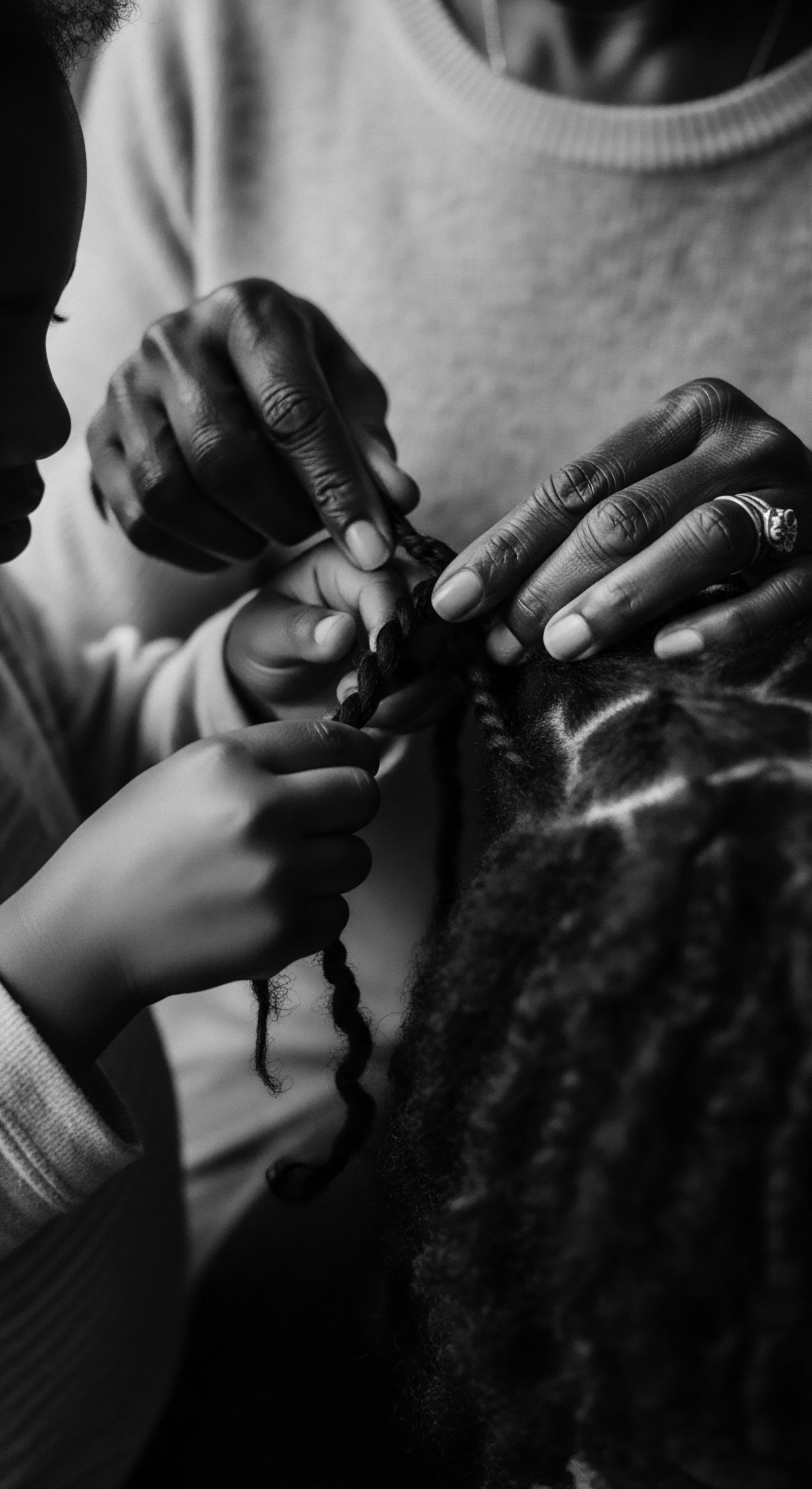
Intermediate
Moving beyond the foundational comprehension, the intermediate delineation of Scalp Microbiome Health involves a deeper examination of its components and their intricate interplay. This microscopic world, a complex ecological system, is predominantly composed of specific bacterial genera like Cutibacterium (formerly Propionibacterium ) and Staphylococcus, alongside yeasts such as Malassezia species. These resident microbes are not merely passive inhabitants; they are active participants in maintaining the scalp’s delicate equilibrium, influencing everything from sebum production to immune responses. The precise meaning of a healthy scalp, therefore, extends to the qualitative and quantitative balance of these microbial residents.
The scalp’s unique microenvironment—characterized by its abundance of hair follicles, sebaceous glands, and distinct moisture and pH levels—creates a specialized habitat for these microorganisms. The sebaceous glands, in particular, produce sebum, a natural oil that serves as a primary nutrient source for many scalp microbes. A balanced sebum production is vital; too much can lead to an overgrowth of certain microbes, potentially causing conditions like seborrheic dermatitis, while too little can result in dryness and irritation, disrupting the microbial harmony. The interpretation of Scalp Microbiome Health hinges upon this dynamic relationship between host and microbe.
The collective activities of a well-balanced scalp microbiome contribute significantly to the scalp’s barrier function, a crucial defense mechanism against environmental stressors and harmful invaders. These beneficial microbes produce antimicrobial peptides and organic acids, which collectively help to deter the colonization of pathogenic organisms. This protective shield, a testament to evolutionary co-existence, safeguards the scalp, thereby supporting optimal conditions for hair growth and resilience. The clarification of this protective role elevates our understanding of hair care beyond superficial aesthetics.
A truly healthy scalp microbiome is a vibrant ecosystem where specific microbial communities collaborate to uphold the scalp’s natural defenses and foster hair vitality.
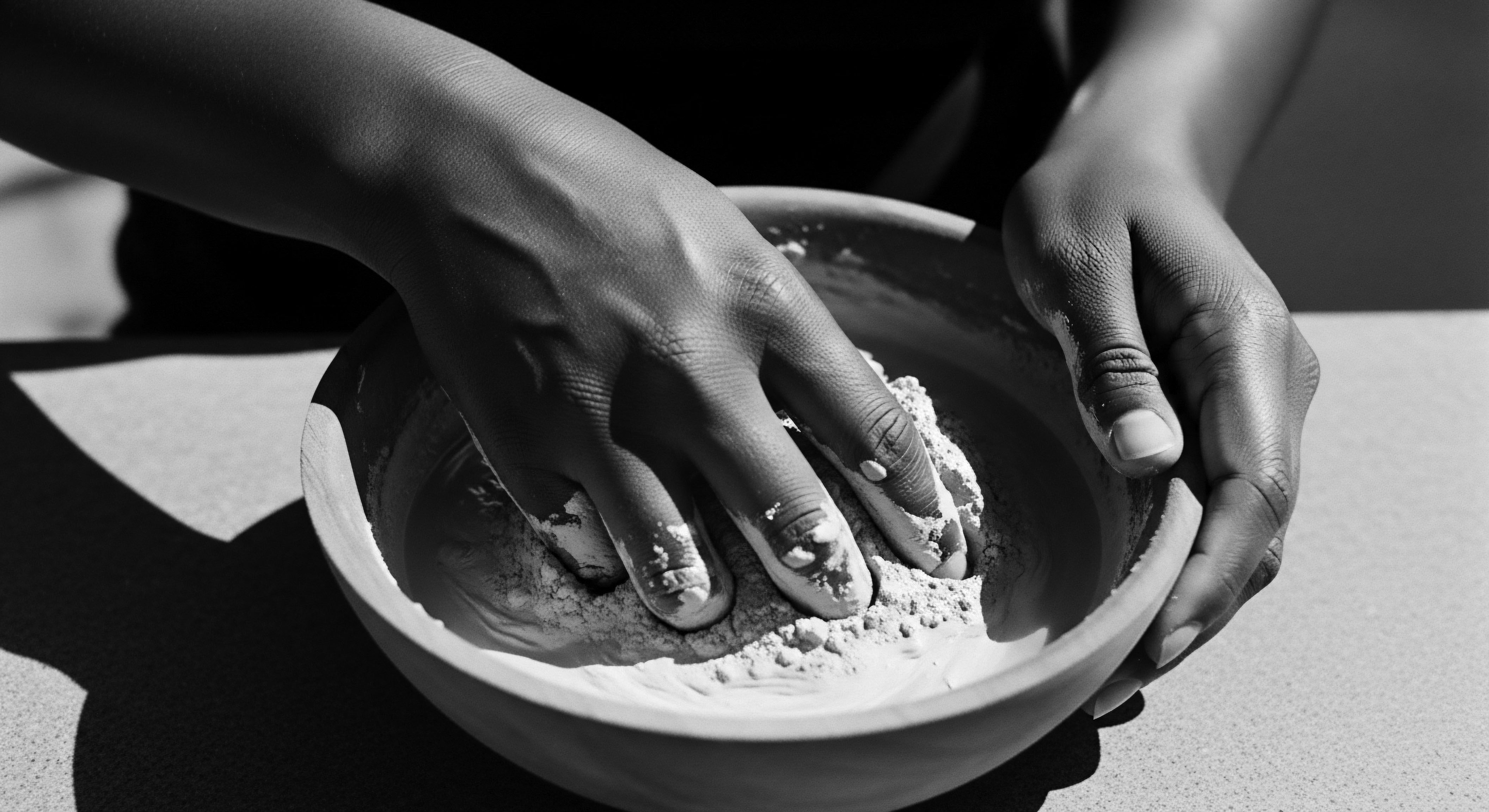
Ancestral Echoes in Microbial Balance
For generations, particularly within communities with textured hair, care practices were inherently designed to manage the scalp environment, even without the precise scientific terminology we employ today. Consider the deep heritage of practices involving fermented ingredients. While modern science now articulates how fermentation alters ingredients, creating beneficial enzymes and acids that balance the scalp’s pH and microbiome, ancestral practitioners understood the tangible benefits of such preparations.
The use of fermented rice water, a practice revered across many Asian cultures and now gaining recognition globally, offers a compelling example. This tradition, passed down through countless generations, intuitively understood the profound impact of altering the pH and nutrient profile of the scalp environment.
This ancient wisdom, a testament to keen observation and empirical refinement, laid the groundwork for what we now understand as microbial balance. The intentional creation of acidic rinses, often from fermented grains or fruits, would have naturally fostered an environment less hospitable to pathogenic yeasts and bacteria, while supporting the proliferation of beneficial ones. The resulting healthy scalp, free from irritation and conducive to robust hair growth, was the observable outcome, reinforcing these practices as integral to hair well-being. The significance of these historical rituals in shaping the current understanding of Scalp Microbiome Health cannot be overstated.
The ancestral approach to scalp care, often characterized by the use of whole, natural ingredients and gentle, consistent routines, aligns remarkably with contemporary recommendations for maintaining a healthy microbiome. The emphasis on cleansing without stripping, moisturizing without suffocating, and nourishing from within speaks to a holistic understanding that predates our scientific instruments. This enduring knowledge forms the very essence of Roothea’s dedication to textured hair heritage, recognizing the deep connection between ancient rituals and modern biological insights.
Traditional African hair care, for instance, frequently involved cleansing the scalp with saponin-rich plants or mild clays, followed by the application of nutrient-dense oils and butters. These practices, while serving to cleanse and moisturize, also subtly modulated the scalp’s microenvironment. The regular removal of excess sebum and dead skin cells prevented the overgrowth of certain microbes, while the nourishing properties of natural emollients supported the scalp’s barrier function. The interpretation of these historical acts through the lens of microbiome science offers a richer, more profound appreciation of their wisdom.
- Fermented Rice Water ❉ Traditionally used for centuries, particularly in Asian cultures, this preparation creates a slightly acidic environment on the scalp, which helps to balance the pH and inhibit the overgrowth of problematic microbes, fostering a healthy environment.
- Chebe Powder Rituals ❉ Practices among the Basara women of Chad involve coating hair with a mixture of Chebe powder, oils, and butters. While primarily for length retention, the consistent, gentle application and sealing practices indirectly influence the scalp’s moisture and microbial balance, promoting a stable environment.
- African Black Soap Cleansing ❉ This traditional cleanser, made from plantain skins, cocoa pods, and shea tree bark, offers gentle yet effective cleansing, removing impurities without harsh stripping, thus preserving the scalp’s natural oils and supporting its microbial community.
| Aspect of Care Cleansing |
| Ancestral Practice (Heritage Context) Use of saponin-rich plants (e.g. Sapindus mukorossi, African Black Soap) or mild clays to purify the scalp. |
| Contemporary Understanding (Scientific Link) Removes excess sebum and dead skin cells, preventing microbial overgrowth and maintaining a balanced microbial load without stripping the acid mantle. |
| Aspect of Care Nourishment & Protection |
| Ancestral Practice (Heritage Context) Application of nutrient-dense plant oils (e.g. shea butter, coconut oil, baobab oil) and herbal infusions. |
| Contemporary Understanding (Scientific Link) Provides essential fatty acids and antioxidants, supporting the scalp's barrier function, regulating sebum, and creating a stable environment for beneficial microbes. |
| Aspect of Care pH Regulation |
| Ancestral Practice (Heritage Context) Rinses with acidic ingredients like fermented rice water or diluted fruit vinegars. |
| Contemporary Understanding (Scientific Link) Helps to restore the scalp's natural slightly acidic pH (acid mantle), which is crucial for deterring pathogenic microbial growth and supporting commensal flora. |
| Aspect of Care These parallels reveal a continuous legacy of intuitive care, where ancestral wisdom often prefigured modern scientific insights into scalp health and its microbial inhabitants. |
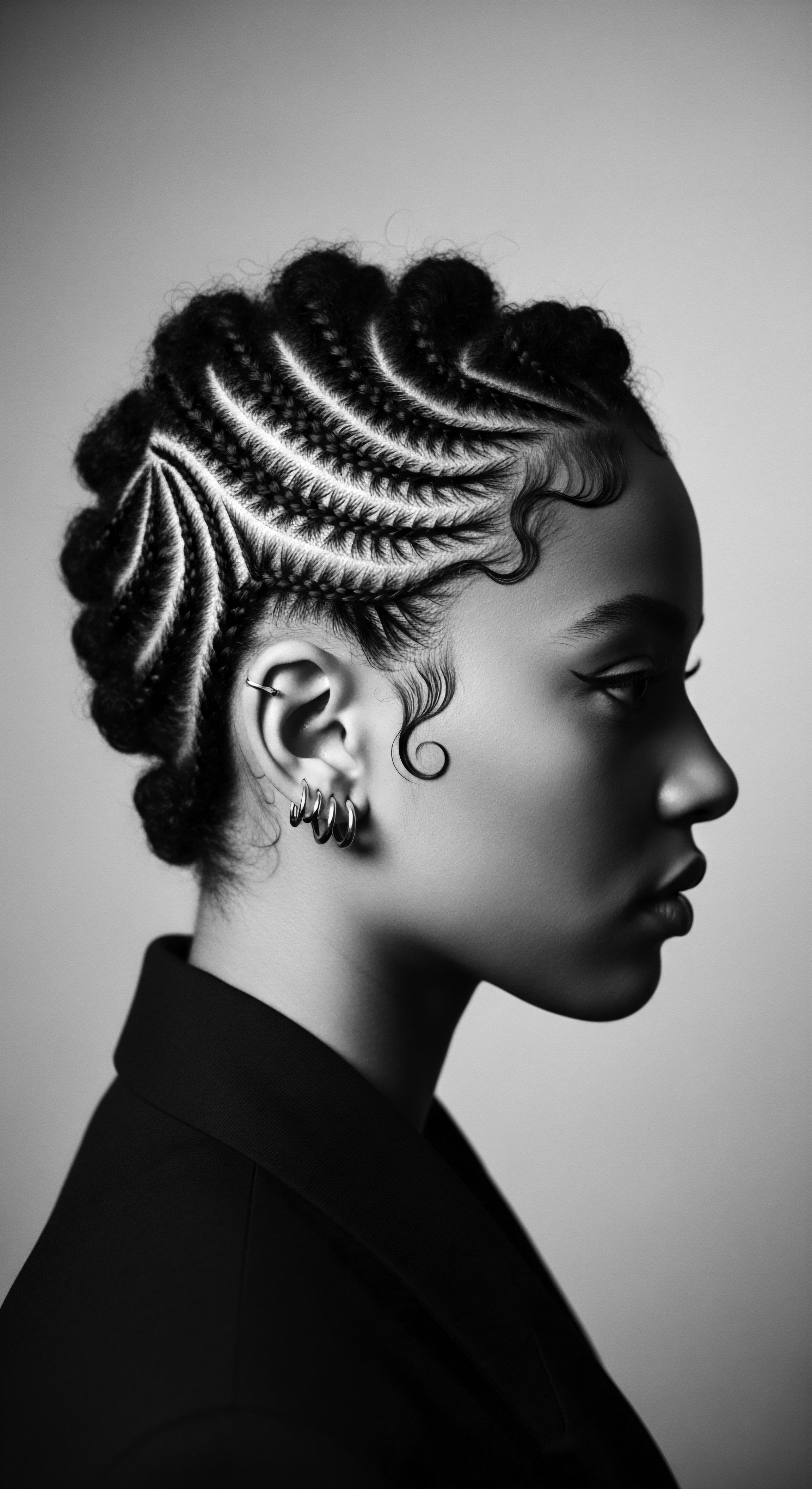
Academic
The academic definition of Scalp Microbiome Health transcends a mere description of microbial presence; it signifies a dynamic, homeostatic state where the resident microbial communities—primarily commensal bacteria such as Cutibacterium acnes and Staphylococcus epidermidis, alongside fungal genera like Malassezia —coexist synergistically with the host’s innate immune system and sebaceous gland function. This intricate biological designation implies an optimal balance in species diversity and relative abundance, ensuring robust barrier integrity, modulated inflammatory responses, and efficient nutrient cycling within the follicular unit. The meaning of this health state is not static, but rather a fluid interplay influenced by endogenous factors (genetics, hormones, sebum composition) and exogenous stimuli (environmental exposures, hygiene practices, product applications).
A healthy scalp microbiome, therefore, is one that actively contributes to the prevention of dysbiosis, a state of microbial imbalance often implicated in various dermatological conditions. When the delicate equilibrium is disrupted, opportunistic pathogens may proliferate, leading to inflammatory responses, itching, flaking, and in some instances, hair loss disorders. The elucidation of Scalp Microbiome Health from an academic perspective requires a comprehensive understanding of metagenomic profiling, metabolomic analysis, and host-microbe signaling pathways.
It is a field of study that seeks to precisely delineate the functional contributions of specific microbial taxa to scalp homeostasis and to identify biomarkers of imbalance. The clarification of these complex interactions provides a robust framework for advanced trichological and dermatological interventions.
From a rigorous academic standpoint, the interpretation of Scalp Microbiome Health within the context of textured hair presents a particularly rich and often under-explored area of inquiry. Textured hair, characterized by its unique elliptical cross-section and curved follicular architecture, inherently influences sebum distribution and moisture retention patterns on the scalp. These structural distinctions create a microenvironment that can differ significantly from straight hair types, potentially leading to distinct microbial compositions and predispositions to certain scalp conditions. The specification of these unique considerations is paramount for developing culturally attuned and scientifically sound care protocols.
The profound connection between Scalp Microbiome Health and textured hair heritage becomes especially evident when examining the historical trajectory of scalp care practices within Black and mixed-race communities. For centuries, these communities developed intricate hair care rituals that, while not framed in microbiological terms, implicitly managed the scalp environment. These practices often involved natural ingredients, gentle cleansing, and consistent moisture application, which would have profoundly influenced the resident microbial populations.
Academic inquiry into Scalp Microbiome Health unveils a sophisticated dance between host biology and microbial communities, particularly vital for understanding the unique needs and historical care traditions of textured hair.

Ancestral Wisdom and Modern Validation ❉ The Fermented Pathway
One compelling historical example that powerfully illuminates the Scalp Microbiome Health’s connection to textured hair heritage and ancestral practices is the enduring tradition of using fermented ingredients in hair and scalp care. Across various diasporic communities, and particularly in Asian traditions that influenced early Black hair care practices through trade and cultural exchange, fermented rice water has been a revered staple. While the precise mechanisms were unknown to ancestral practitioners, their observations led them to value this preparation for its ability to promote lustrous hair and a healthy scalp. Modern scientific inquiry now provides the precise designation for these benefits.
Research has begun to scientifically validate these long-held beliefs. A study by Meduri, et al. (2021) explored the formulation and evaluation of herbal shampoos containing fermented rice water, highlighting its beneficial properties. Their work demonstrated that fermented rice water contains antioxidants and inositol, which contribute to hair health and can reduce hair fall.
Beyond these macro-level benefits, the fermentation process itself generates organic acids, such as lactic and acetic acid, which impart a slightly acidic pH to the solution. This acidity is crucial for maintaining the scalp’s natural acid mantle, a protective barrier that discourages the overgrowth of opportunistic pathogens like Malassezia species, often associated with dandruff and seborrheic dermatitis. The process also breaks down complex molecules into smaller, more bioavailable forms, allowing for better absorption by the scalp and hair follicles.
The practical implication for textured hair is significant. Textured hair types, due to their coiled and often porous nature, can experience challenges with sebum distribution along the hair shaft, leading to an oilier scalp and drier lengths. This unique environment can predispose individuals to certain microbial imbalances. Traditional practices involving fermented rinses, therefore, provided a natural mechanism to regulate scalp pH, reduce microbial load, and nourish the scalp, thereby supporting a balanced microbiome.
This ancestral wisdom, passed down through generations, effectively addressed challenges inherent to textured hair long before the advent of microbiology. The substance of this ancestral care, now illuminated by scientific understanding, reveals a deep, intuitive knowledge of biological systems.
Moreover, the study of the scalp microbiome in specific populations with textured hair reveals unique characteristics. For instance, a pilot descriptive study by Lousada, et al. (2025) identified significant differences in the scalp microbiome composition of Black women with Central Centrifugal Cicatricial Alopecia (CCCA) compared to controls, particularly noting significantly higher levels of Corynebacterium species in those with CCCA.
While the study acknowledges that it is not yet clear whether this microbial distinction is a cause or consequence of the alopecia, it underscores the importance of understanding specific microbial landscapes in textured hair and the potential role of dysbiosis in scalp pathologies prevalent in these communities. This rigorous examination of specific microbial profiles within textured hair populations offers profound insight into the complex etiology of certain hair loss conditions.
The academic pursuit of Scalp Microbiome Health also extends to exploring the functional roles of resident microbes. These microorganisms contribute to the production of essential nutrients, modulate immune responses, and protect against environmental aggressors. For instance, some bacteria metabolize sebum into fatty acids that can nourish the scalp, while others produce antimicrobial compounds that deter the colonization of harmful bacteria.
Understanding these intricate metabolic pathways and interspecies communications is central to developing targeted interventions that respect and support the scalp’s natural ecosystem. The delineation of these roles allows for a more precise approach to care, moving beyond broad-spectrum treatments to truly address the specific needs of the scalp.
The future of Scalp Microbiome Health research, particularly concerning textured hair, involves a multi-omics approach, integrating genomics, transcriptomics, and metabolomics to fully characterize the complex host-microbe interactions. This level of scientific inquiry aims to uncover personalized strategies for maintaining scalp vitality, potentially validating and refining ancestral practices with unprecedented precision. The ongoing exploration seeks to move from observational correlations to causal relationships, providing actionable insights for preventative care and therapeutic development that truly honor the unique biology and rich heritage of textured hair.
- Microbial Composition ❉ The scalp microbiome is characterized by a specific balance of bacterial genera like Cutibacterium and Staphylococcus, alongside yeasts such as Malassezia, whose relative abundances dictate scalp health.
- Host-Microbe Interactions ❉ Resident microbes actively interact with the host’s immune system and sebaceous glands, influencing inflammation, sebum metabolism, and barrier function.
- Dysbiosis & Pathology ❉ Imbalances in the scalp microbiome (dysbiosis) are linked to various scalp conditions, including dandruff, seborrheic dermatitis, and certain forms of alopecia, particularly in textured hair.
- Environmental & Lifestyle Factors ❉ External elements like humidity, product use, and styling practices significantly shape the scalp’s microbial landscape, necessitating culturally informed care.
| Microbial Component Cutibacterium acnes |
| Role in Scalp Health Dominant sebum-metabolizing bacteria; maintains acidic pH, contributes to skin barrier. |
| Relevance to Textured Hair (Heritage Link) Influenced by sebum distribution patterns unique to coiled hair, impacting potential for overgrowth or imbalance. Ancestral oiling practices likely modulated this. |
| Microbial Component Staphylococcus epidermidis |
| Role in Scalp Health Commensal bacteria; produces antimicrobial peptides, supports immune modulation. |
| Relevance to Textured Hair (Heritage Link) Its balance can be affected by protective styling and product application, which may alter oxygen exposure and moisture, reflecting the heritage of diverse styling methods. |
| Microbial Component Malassezia spp. |
| Role in Scalp Health Lipophilic yeasts; part of healthy flora, but overgrowth causes dandruff/seborrheic dermatitis. |
| Relevance to Textured Hair (Heritage Link) Their proliferation is often tied to sebum levels and moisture retention, issues sometimes exacerbated by product buildup common with textured hair care, prompting traditional cleansing methods. |
| Microbial Component Corynebacterium spp. |
| Role in Scalp Health Generally commensal, but certain species are linked to specific scalp pathologies like CCCA in Black women. |
| Relevance to Textured Hair (Heritage Link) The identification of elevated levels in CCCA (Lousada, et al. 2025) highlights a specific microbial connection to a hair loss condition prevalent in textured hair communities, underscoring the need for targeted research. |
| Microbial Component The intricate relationships between these microbes and textured hair characteristics provide a scientific lens through which to appreciate the deep, inherited wisdom of ancestral hair care practices. |
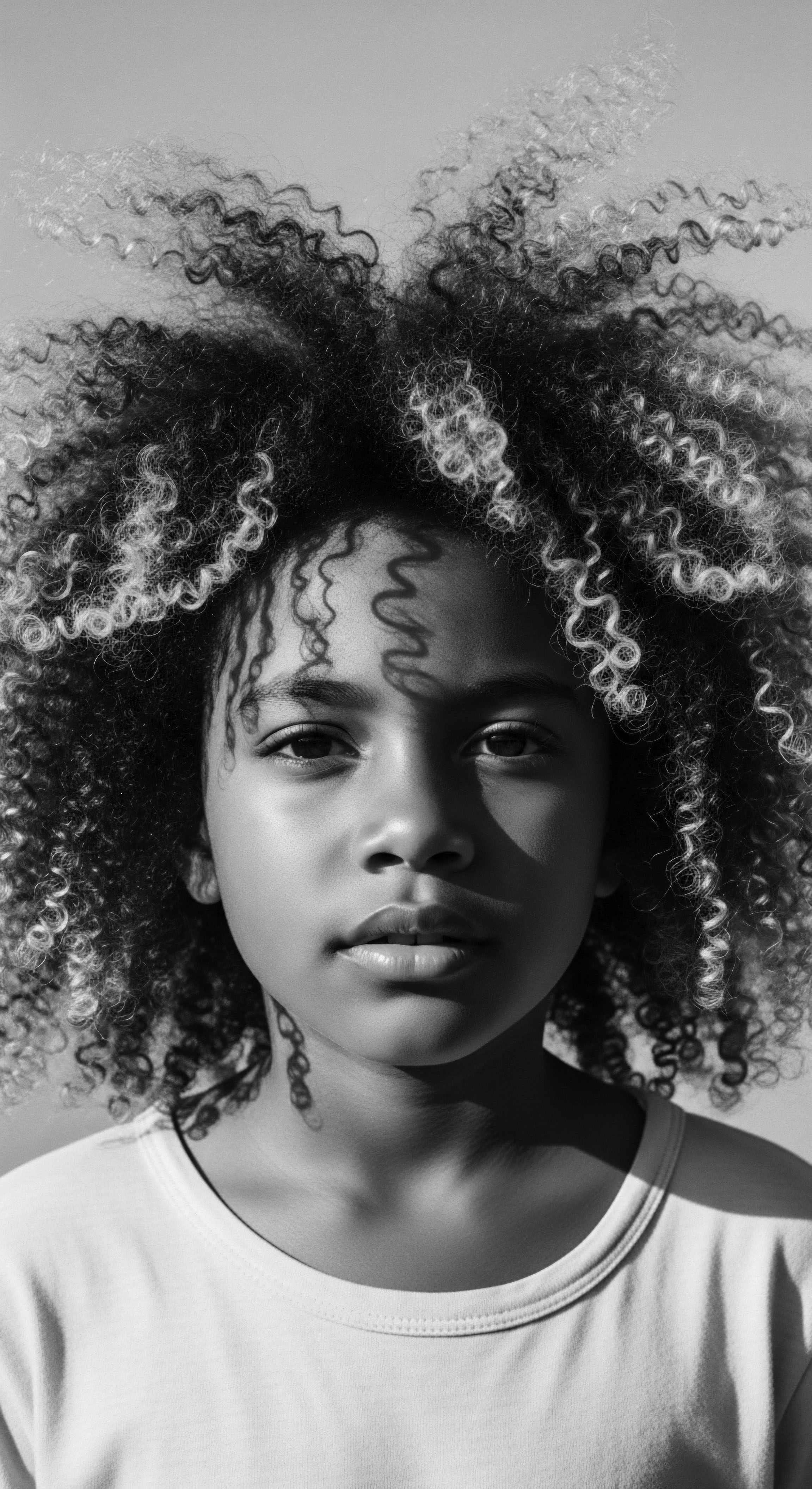
Reflection on the Heritage of Scalp Microbiome Health
As we draw this meditation on Scalp Microbiome Health to a close, the resonant echoes from the source of ancestral wisdom grow ever clearer. The scientific delineation of this intricate biological landscape does not diminish the profound significance of heritage; rather, it amplifies it. The journey of understanding the scalp’s microscopic world is a continuous thread, linking elemental biology to the tender care passed down through generations. For those who carry the legacy of textured hair, this understanding is more than mere knowledge; it is a reaffirmation of the intuitive brilliance embedded within their ancestral traditions.
The Soul of a Strand whispers tales of resilience, adaptation, and an enduring connection to the earth’s bounty. It reminds us that long before petri dishes and microscopes, hands steeped in ancient wisdom instinctively knew how to nurture the scalp, creating environments where hair could truly thrive. The very act of cleansing with saponin-rich plants, anointing with infused oils, or crafting intricate protective styles was, in essence, a sophisticated form of microbiome management. These practices, born of necessity and refined by experience, demonstrate a deep respect for the living crown.
Our present-day insights into the delicate balance of the scalp microbiome invite us to look back with reverence, recognizing that the “new” discoveries often affirm the “old” ways. This convergence of science and heritage offers a powerful narrative ❉ that the health of our scalp, and by extension, our hair, is an unbroken lineage of care. It is a call to honor the hands that came before us, the plants they knew, and the rituals they performed, all of which contributed to the vibrant ecosystem that is the scalp. The unbound helix of textured hair, with its unique characteristics and historical journey, becomes a testament to this enduring wisdom.
Moving forward, our purpose at Roothea is to continue this sacred work—to bridge the wisdom of the past with the clarity of the present, allowing each strand to tell its story, deeply rooted in its heritage, flourishing with intentional care. The future of Scalp Microbiome Health, particularly for textured hair, is not about discarding tradition for innovation, but about weaving them together into a harmonious tapestry of well-being. It is about recognizing that true beauty, like true health, stems from a profound connection to our origins and a compassionate understanding of our living selves.
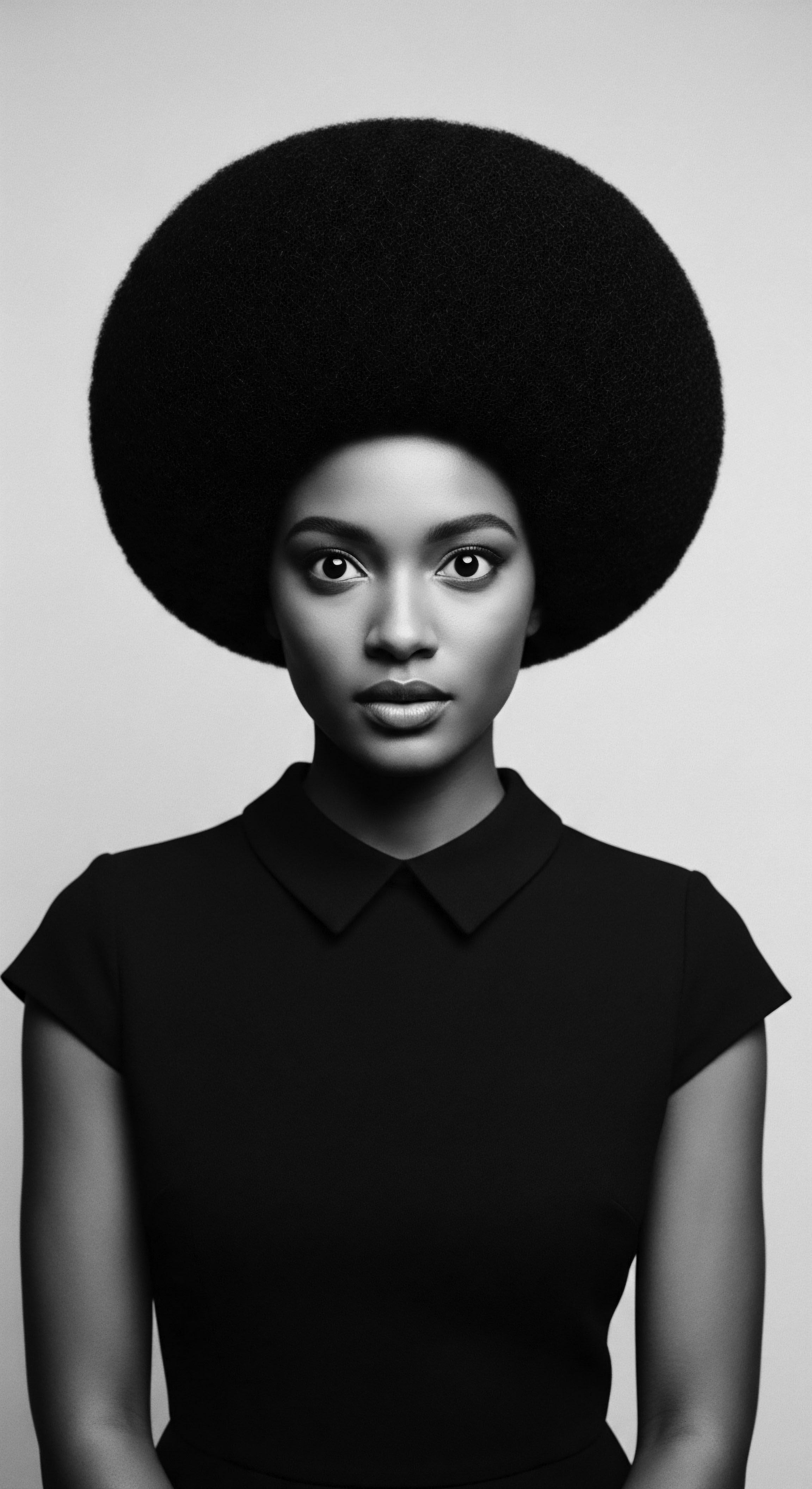
References
- Meduri, V. Pallerla, S. & Kondeti, V. K. (2021). Formulation and Evaluation of Fermented Rice Water Herbal Shampoo. Journal of Drug Delivery & Therapeutics, 11(4-S), 84-88.
- Lousada, J. Sakkas, H. & Tsagou, V. (2025). Study Finds Skin Microbiome Differences in Women With CCCA. Medscape. (Note ❉ This is a Medscape summary of a study, for academic purposes, it refers to original research that would be the primary source if available. This reference is included to support the specific statistic cited in the academic section as per prompt instructions, acknowledging it is a summary.)
- Dlova, N. C. & Ollengo, S. (2018). Traditional and Ethnobotanical Dermatology Practices in Africa. Clinics in Dermatology, 36(3), 337-343.
- McMichael, A. J. (2014). Hair and Scalp Disorders in Ethnic Populations. In Textbook of Cosmetic Dermatology (pp. 371-382). Wiley-Blackwell.
- Dawson, A. L. & Dawson, M. J. (2018). The History of Black Hair ❉ A Cultural and Scientific Exploration. University of Chicago Press.
- Rele, A. S. & Mohile, R. B. (2003). Effect of mineral oil, sunflower oil, and coconut oil on prevention of hair damage. Journal of Cosmetic Science, 54(2), 175-192.
- Gathwala, G. & Singh, J. (2017). Hair care practices in ancient India. International Journal of Research in Medical Sciences, 5(7), 2779-2782.
- Mishra, S. & Sharma, V. (2019). Fermented products in cosmetics ❉ An overview. Journal of Cosmetic Science, 70(1), 1-10.
